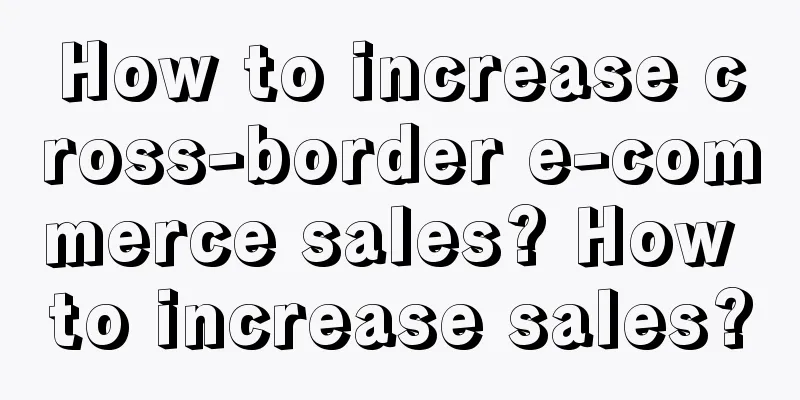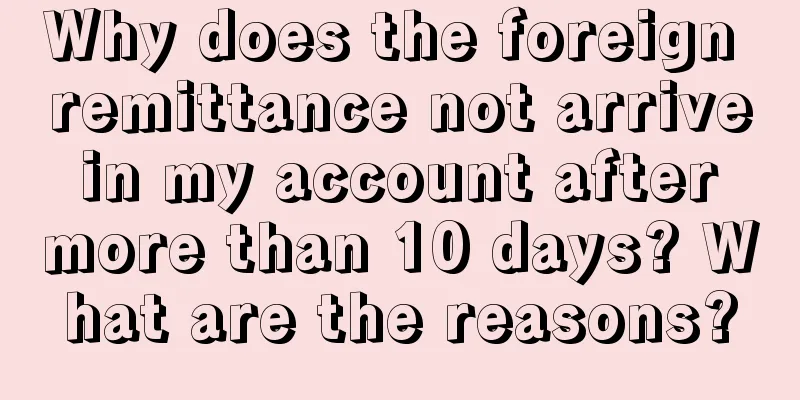How to increase cross-border e-commerce sales? How to increase sales?

|
The first step for a novice to engage in cross-border e-commerce is to choose a good platform, the second step is to choose the country or site to do business, and the third step is to choose products. After choosing the products, it is time to operate and promote them. So how to increase cross-border e-commerce sales? How can cross-border e-commerce increase sales? 1. Product identification and classification of potential markets First, look for emerging markets abroad that fit your product and audience. Make a list of countries you think would be the best fit. Expanding in one country or region is smarter than trying to sell everywhere. A good starting point is to check the target country business guide. Once you have found areas where there is a clear demand for your product, evaluate the culture, climate, and competition in those specific markets. 2. Check product restrictions for foreign markets that sellers are interested in An important but often overlooked aspect of cross-border e-commerce is how to identify and comply with various restrictions on the sale and distribution of certain products in foreign markets. You need to make sure your products can be sold in the countries you are interested in. You may have a huge market for your products, but if laws and regulations prohibit or restrict the sale of those products, you need to consider your options. Note that there is a difference between illegal products (not allowed to be sold) and products that are restricted (must meet certain standards). The guidelines for products such as weapons, medicines, and food may seem obvious, but some countries restrict batteries, furs, helmets, seeds, and tobacco products. 3. Determine pricing and tax strategies that are appropriate for the market you want to achieve Regardless of where you choose to expand your international business, you will have to deal with regional tax regulations. Taxation of cross-border e-commerce operations can be complex, so it is important to consider tax requirements and the potential impact on your business. However, there are more considerations when it comes to pricing than just taxes. You need to consider shipping costs, domestic distribution costs, insurance, sales commissions, etc. The main factors that influence the price you set are your total cost of selling and delivering the product, market demand in the country you sell in, and the current prices your competitors are setting for similar products. In general, if you want to increase sales in cross-border e-commerce, you must optimize your listings as carefully as possible, and do enough competitive product analysis to find out the gaps, make up for the shortcomings, and make your products better than those of your competitors. |
<<: How to start cross-border e-commerce? How to start cross-border e-commerce?
>>: What is cross-border e-commerce operation? What are the daily tasks of operation?
Recommend
Why is there still a chance for amateurs to advertise on Xiaohongshu?
In the community of Xiaohongshu, where traffic is ...
What are the requirements for entering Amazon? What information do I need?
When it comes to cross-border e-commerce platforms...
The content industry is undergoing a major change. Are all the hits dependent on AI?
As AI develops beyond everyone's expectations,...
TikTok is no longer running wild
Before this, the only apps in the world with more ...
How to calculate Amazon product pricing? What are the methods?
If you want to upload Amazon products to your stor...
How much does a cross-border e-commerce store earn? How can merchants earn more?
More and more domestic merchants are opening store...
One evening show, forty years, trillions of business opportunities: the secret history of Spring Festival Gala sales
The Spring Festival Gala, as a cultural event on C...
Does Amazon Video have a high approval rate? What are the Amazon Video rules?
Merchants in online stores like to publish product...
6 major pitfalls in operating self-media IP!
This article analyzes the six taboos that need to ...
Double 11 targets “young people who know how to spend money”
Double Eleven has been held for more than a decade...
What kind of value does WeChat’s heavy focus on search bring to brands?
In the development of the Internet, "search&q...
100,000 people watched the auction. How did Sprite, which was founded in 1982, use old tricks to create new growth on Douyin?
The once popular online meme "Sprite in 1982&...
Is it illegal to register a store on Amazon? How to operate an Amazon store?
Nowadays, more and more merchants are opening stor...
Socializing with friends: Young people are looking for friends wherever they go.
With the wave of information-based urbanization, t...
How to open Shopee official wallet? What is the method?
When opening a store on Shopee, you need to set up...









